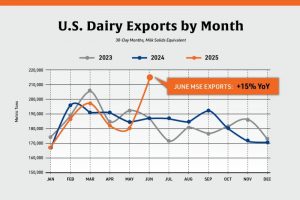Additional information on historical holiday sales have been compiled, which is based on key figures and expectations regarding holiday sales and associated economic indicators as reported by the National Retail Federation and other referenced sources. Visit nrf.com/media-center/press-releases/2023-holiday-reach-record-spending-levels for more detailed information.
The key takeaway from the National Retail Federation is their anticipation of increased holiday spending. When thinking about dairy products clearing the market, that expectation should be balanced with other potential factors.
- increasing personal debt levels
- decreasing personal savings rates
- inflationary pressures, especially on gifts and food because they could drive consumers to prioritize value and discounts
- spending may not indicate a true increase in economic well-being but rather a trend toward credit-reliant purchases
- the increase in credit card debt and use of savings for consumption suggests an unsustainable financial situation for consumers
- consumers have responded to inflation through dissaving, a temporary solution that could potentially exacerbate a longer-term problem
Based on the numbers alone, dairy’s consumer price index metrics paint a relatively favorable picture for domestic sales, and the apparent increase in consumer spending could translate into an increase of dairy product sales. The question remains, if consumers do spend more dollars, does that mean they are purchasing greater quantities?
The Bureau of Labor Statistics reported a 3.7 percent increase in inflation as of September. That information, when paired with the commercial buying of dairy products being reportedly weaker than expected for September, might mean the product does not clear the shelves at the pace many in the industry would like.
There is a concern that spending might not meet the expectations of the dairy industry, which often relies on heightened demand during this time to bolster prices. If spending falls short, it could lead to price pressure in the first quarter of 2024. That is especially pertinent considering the low milk prices experienced in 2023 and the historical trend of milk prices dipping in the first few months of each calendar year. Analyzing the holiday spending data will be important in setting expectations and preparing for potential market adjustments in the dairy sector as producers and consumers transition into 2024.
Consumer spending during this holiday season may also provide valuable insights into the state of the American household, particularly in understanding how the recent convergence of market changes is impacting them. Once all the holiday spending and consumption data are in the books, they will help set the tone and shape expectations for the first quarter of 2024.
























